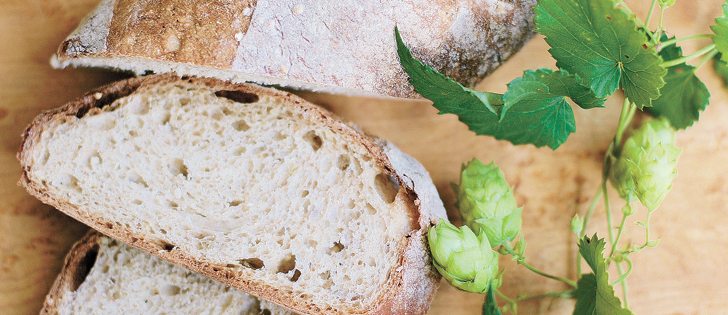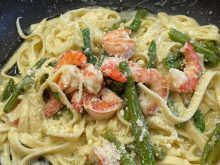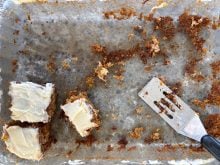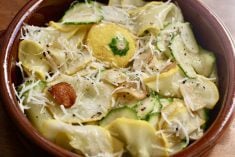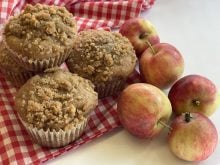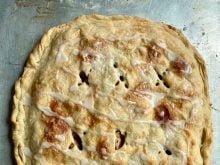Hops are perennials grown as a landscape plant or for beer making but can also be added like a bay leaf to soups and stews.
Both the young shoots that come out of the ground in spring and the cones that form on the plant in late summer are edible.
These cones contain lupulin, which is a substance that consists of resins and essential oils and gives the hops its characteristic bitterness.
There are several varieties of hops and each has its own unique flavour. Rub the cone between your fingers to get an idea of its flavour.
Read Also

Know what costs are involved in keeping crops in the bin
When you’re looking at full bins and rising calf prices, the human reflex is to hold on and hope for more. That’s not a plan. It’s a bet. Storage has a price tag.
Use them sparingly because they can overpower a dish. Add during the last five minutes of cooking and remove before serving.
Use it to infuse milk to make a Bearnaise sauce or ice cream or add a little to lemonade. Tear a few pieces of the cone into a salad to give bitterness or saute the spring shoots like asparagus.
Ants love hops so be sure to wash in a large bowl of cold water. Let them soak for a few minutes until the ants come out, then squeeze to dry and lay on a clean towel. At this point, they can also be frozen and stored for up to six months.
Honey and Hops Ice Cream
The honey gives the ice cream a smooth texture, but be sure to add it after cooking the custard. Honey is slightly acidic and can cause custards to curdle.
- 1 1/2 c. whole milk 375 mL
- 1/2 c. fresh hops, washed and squeezed dry 125 mL
- 1/4 c. sugar 60 mL
- pinch of salt
- 1 1/2 c. heavy cream 375 mL
- 5 large egg yolks
- 1/2 c. mild flavour 125 mL
In a saucepan, bring milk to a simmer. Add hops and continue to simmer for about 15 minutes. Strain milk, squeeze out as much liquid as possible. Return the strained milk to a clean saucepan and add sugar and salt.
Pour the cream into a medium bowl and set a mesh strainer on top.
Add the warmed egg yolks back into the saucepan.
Over medium heat, stir the mixture constantly with a wooden spoon or heatproof spatula, scraping the bottom as you stir, until the mixture thickens and coats the spoon.
Pour the custard through the strainer and discard any lumps. Stir the milk and cream mixture for a minute or so, until tepid, then mix in the honey.
Chill mixture overnight. The following day before churning, taste the custard and add additional honey, if desired, then freeze the mixture in your ice cream maker according to the manufacturer’s instructions.
Source: Adapted from The Perfect Scoop.
Bruschetta with Tomato, Basil and Hops
- 1/2 baguette or crusty long loaf bread, thinly sliced
- 2 large cloves garlic
- extra virgin olive oil, for drizzling
- 3 small plum tomatoes, halved and seeded
- 20 fresh basil leaves
- coarse salt
Place bread slices on a baking sheet and drizzle generously with oil. Place in an oven heated to 350 F (180 C) to crisp up and brown. Watch carefully and turn once so both sides become toasted. Remove from the oven and rub each piece with the cut side of a clove of garlic.
Chop tomatoes and place in a small bowl. Thinly slice basil and loosely combine with tomatoes. Add a drizzle of oil and coarse salt and gently toss tomatoes and basil to coat.
Generously heap tomato mixture onto toast and top with a few torn scales of the hop cone. Serve immediately.
Honey and Hops Bread with Toasted Quinoa
- 2 c. bread flour 500 mL
- 1 c. whole wheat flour 250 mL
- 1/4 tsp. instant yeast
- 1 1/4 tsp. salt
- 1/2 c. raw quinoa, toasted 125 mL
- 1/4 c. honey 60 mL
- 1/4 c. fresh hops, washed and squeezed dry 60 mL
Chop the hops in a small food processor or blender or with a mortar and pestle. Add the quinoa to a cold, dry pan and heat. Continue to heat until the quinoa is toasted.
Combine all ingredients, except honey, in a large bowl and add 1 5/8 cups (405 mL) water and the honey. Stir until blended. Dough will be shaggy and sticky. Cover bowl with plastic wrap and let rest at least 12 hours, at room temperature, about 70 F (21 C).
Dough is ready when its surface is dotted with bubbles. Lightly flour work surface and place dough on it. Sprinkle with more flour and fold it over on itself once or twice. Cover loosely with plastic wrap and let rest about 15 minutes. Using just enough flour to keep dough from sticking to work surface or to your fingers, gently and quickly shape into a ball.
Generously dust a piece of parchment paper. Place the dough on the parchment and cover with a cotton towel and let rise for about two hours.
When it is ready, dough will be more than double in size and will not readily spring back when poked with a finger.
At least one half-hour before dough is ready, heat oven to 450 F (230 C). Put a six to eight quart (6-8 L) heavy covered cast iron, enamel or Pyrex pot in oven as it heats. When dough is ready, remove pot from oven. Put the dough and parchment paper into the pot. Cover with lid and bake 30 minutes, then remove lid and bake another 15 to 30 minutes, until loaf is beautifully browned. Cool on a rack. Makes one 1 1/2 pound (750 g) loaf.
Source: Adapted from Jim Lahey, Sullivan Street Bakery.
Sarah Galvin is a home economist, teacher and farmers’ market vendor at Swift Current, Sask., and a member of Team Resources. She writes a blog at allourfingersinthepie.blogspot.ca. Contact: team@producer.com.

